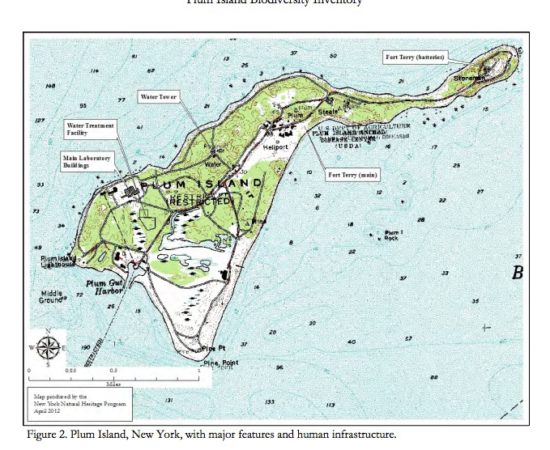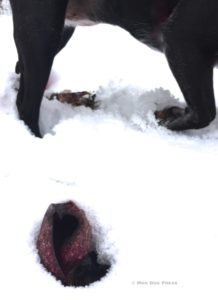Long Island Sound. LINO Nature Conference. Thermogenic Plant Sightings
State lines and borders of countries are not acknowledged by wildlife and natural forces nor the planet as it rolls on through space and time – with all species including humans onboard.

“Long Island Sound is an estuary along the upper East Coast of the United States, bounded by Long Island (New York state) to the south, the coastline of Connecticut to the north, and the southeasternmost coastline of New York to the west. The Sound is well outlined by city and roadway lights in this nighttime photograph taken from the International Space Station (ISS). Astronaut photograph ISS037-E-1802 is provided by the ISS Crew Earth Observations experiment and Image Science & Analysis Laboratory, Johnson Space Center. The image was taken by the Expedition 37 crew. It has been cropped and enhanced to improve contrast, and lens artifacts have been removed. The International Space Station Program supports the laboratory as part of the ISS National Lab to help astronauts take pictures of Earth that will be of the greatest value to scientists and the public…” – NASA Earth Observatory. Image is linked to official site for more planet-wide information and science.
Bald eagles, river otters. Atlantic sturgeon, humpback whales (presentation by CEO of Gotham Whale). Brook trout. The rise and fall of timber rattlesnakes. Restored oyster reefs. Coyotes. White-tailed deer biology. Bat conservation. Horseshoe crabs. Science, knowledge, human activities. Our interconnected world
All are also part of the Long Island Natural History Conference on Friday, March 23 and Saturday, March 24, 2018, Berkner Hall, Brookhaven National Laboratory. For more information inquire via info@longislandnature.org or (631) 267-5228. Admission at the door.

That white disc is a tag that can shed light on the life of a horseshoe crab in Long Island Sound – if found, seen, reported. CB/MDP
The Long Island Nature Organization (LINO) was established in 2012 to support education and research about the natural history of Long Island.
Goals of the conference include:
– introduce people doing field research, natural resource management, and conservation projects on Long Island
– exchange current information on the natural history of Long Island
– identify research and management needs
– foster friendships and collegial relationships
– encourage a greater region-wide interest in Long Island’s natural history.
LINO is incorporated in New York State as a 501(c)3 charitable organization.
Long Island is the largest island in the continental U.S. and a unique biogeographical region located at the northern limits of many southern species of flora and fauna and at the southern limits of many northern species. These features contribute to rich species diversity: some of the island’s preserved areas contain the highest number of rare species per area in New York State.
If you cannot attend, there is information about the group, year-round activities, and an online PDF report worth a read – about Plum Island.
Excerpt: “Plum Island lies in a small archipelago of peninsulas and islands stretching from Long Island’s North Fork to Fishers Island and then to Connecticut and Rhode Island. The island is famously shaped like a pork chop and encompasses 840 acres, approximately the size of New York City’s Central Park, and is owned by the U.S. Department of Homeland Security within the Town of Southold, Suffolk County. Plum Island is surrounded by four bodies of water that influence its offshore and onshore environment and biodiversity: Long Island Sound to the west and north, Block Island Sound to the east, Plum Gut to the immediate southwest, and Gardiners Bay further southwest.

Plum Island map from the PDF. Image is connected to the online detailed report on geology, biodiversity, history.
“The geology of Plum Island is a reflection of its glacial history, which has resulted in varied topography, 17 soil types, and a diverse flora and fauna. The island has had a long and varied cultural history, including use by Native American and colonial farmers, 1800s recreationists, and as a military installation whose infrastructure largely remains. In 1952 a biological laboratory was built and this use continues today as the Plum Island Animal Disease Center, operated jointly by the US Departments of Agriculture and Homeland Security. Its use as a highly secure government facility prevents anyone besides the staff and selected visitors from using the island in any other manner or disturbing its plants or animals.
“A systematic survey of the plant communities on Plum Island has never been conducted. We present here a very detailed preliminary seamless natural community map for the island that should serve as the foundation for future ecological data collection.”
…”Plum Island has had a long and varied cultural history, which has had a dramatic impact on the animals and vegetation of such a small island. Prior to the arrival of European settlers, Native Americans probably used the island for fishing and hunting (R.A. Bramson, personal communication). The Pequot Indians grew corn there in the 1630s as a backup crop in case cornfields in Connecticut were burned by the English. In 1659 the island was sold by the Montauk Indians to Samuel Wyllys and for the next 238 years the island was used for farming and the grazing of sheep and cattle. By the mid-1700s there were three families living there and up to 40 or 50 people inhabited the island at times. In 1826 the US government bought three acres of land on the southern shore for a lighthouse that was constructed in 1827.”
– From the PDF (available online for download) Biodiversity and ecological potential of Plum Island, New York New York Natural Heritage Program.
One last wonder that cannot be found indoors.
A skunk cabbage literally melts the new snow around it to emerge in late winter/early spring.
As a thermogenic plant, these plants have the “ability to raise their temperature above that of the surrounding air. Heat is generated in the mitochondria, as a secondary process of cellular respiration called thermogenesis. Alternative oxidase and uncoupling proteins similar to those found in mammals enable the process, which is still poorly understood.” – Wikipedia
“Skunk cabbage is one of just a few plants that exhibit thermogenesis, or the ability to metabolically generate heat, by cyanide resistant cellular respiration.” From Master Gardener Program (Wisconsin/2016), which features more images and details of the process.
Imagine if the process was unlocked – to incorporate into the miles of human-made surfaces that could then shed any covering of snow and/or ice – perhaps aid the process.

